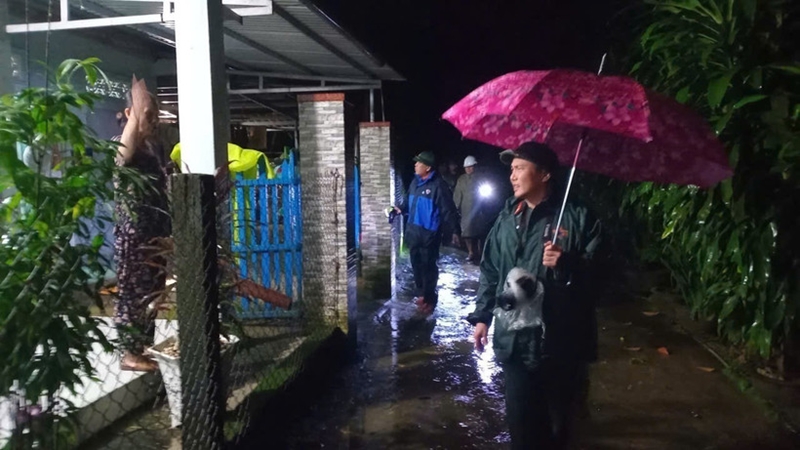Under the document, the ministry requested military forces to maintain high alert, monitor flood developments, and swiftly deploy resources to ensure the safety of military bases, warehouses, and operational areas.
Additionally, units are tasked with relocating personnel from high-risk landslide zones, reviewing disaster response plans for critical infrastructure, and assisting local authorities in evacuating residents from danger areas to safety. The focus is on safeguarding vital infrastructure, ongoing construction sites, industrial zones, and residential areas from significant loss and damage, while ensuring the safety of on-duty personnel.
    |
 |
|
Vice Chairman of the People's Committee of Da Nang Tran Nam Hung inspects flood-hit areas in Tra My commune. |
The General Departments of Logistics-Technical Services, and Defense Industry, and General Department II are responsible for overseeing effective disaster responses, ensuring the safety of warehouses, equipment, and facilities, as well as coordinating the timely provision of rescue materials and supplies to affected areas.
Military Regions 4 and 5 are instructed to collaborate with local authorities in overseeing the execution of disaster relief measures in flood-prone areas. They must ensure adequate preparedness, including the stockpiling of food, water, and communication equipment in flood-risk zones, and mobilize units to assist with recovery operations.
The Navy and Vietnam Coast Guard are tasked with ensuring maritime safety and readiness for search and rescue operations. The Air Defense - Air Force Service and Corps 18 are also on standby to conduct aerial search and rescue, and to deliver essential supplies to isolated areas when directed.
Army Corps 34, the Artillery and Missile Command, and other units must revise their plans and be ready to deploy to help with rescue operations upon local requests.
The Signal Corps and Military Industry-Telecoms Group (Viettel) will ensure continuous communication and data transmission to support government and ministry directives regarding civil defense.
All units are to report progress and activities to the Ministry of Defense through the Command Center and the Rescue and Relief Division for monitoring and further instructions.
According to the National Center for Hydro-Meteorological Forecasting, water levels on the Huong River (Hue) and Vu Gia - Thu Bon Rivers (Da Nang) are rising rapidly, with other rivers in southern Quang Tri and Quang Ngai also increasing.
As of 14:00 on October 27, water levels in the Bo River (Hue) at Phu Oc station were 5.25 meters, 0.75 meters above alert level 3, matching the 2020 historical flood levels. Additional updates show that the floodwaters are expected to continue rising over the next 12 hours, surpassing the 2020 historical levels by 0.2-0.3 meters at some stations.
In Da Nang city, as of October 27 afternoon, nearly 1,600 people from 377 households had been relocated from areas at high risk of flash floods, rising river levels, and landslides.
Senior Colonel Nguyen Van Hoa, Deputy Chief of Staff of Military Region 5, stated that to assist with flood recovery, particularly addressing severe landslides along transport routes, Military Region 5 has deployed 6,293 personnel and local militia, along with over 300 vehicles, including specialized motorbikes, communication equipment, and UAVs. These forces have already reached key locations and stand ready to deploy equipment when requested.
Source: VNA